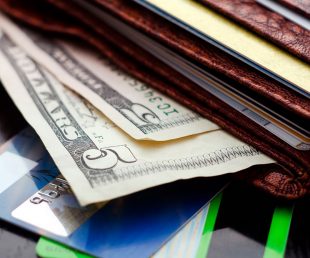KIPLINGER • BY INVESTMENT ADVISER REPRESENTATIVE, ANTHONY LANDI
Taxes are inevitable – or at least it seems – but that doesn’t mean you need to pay more than what’s actually due.
Unfortunately, each year many people send Uncle Sam a larger check than is required, not so much because they are feeling particularly generous toward the federal government, but because they don’t get the kind of macro tax-planning investment advice that they need.
When it comes to your investments and taxes, you should ask yourself a couple of questions: What are these investments going to cost me in taxes over my lifetime? And how do I reduce that cost?
Let’s break down the situation and explore how to navigate your way through the tax and investments jungle – potentially saving yourself money in the process. A few things you can do to educate yourself, and thus make better decisions about your investments and your taxes, include:
Know how different investment accounts are taxed
Not all investments are equal when it comes to how they are taxed and when those taxes are due. With some investment accounts — including CDs, savings accounts, trust accounts and brokerage accounts — you pay taxes on your earnings right now. Meanwhile, you can defer paying taxes with other accounts, such as traditional IRAs and 401(k), 403(b) and 457 accounts. Contributions to those can be deducted from your taxable income each year. But remember, you are just putting off paying Uncle Sam, not eliminating what you owe him. Eventually, you will pay taxes on your contributions and any interest you’ve accrued, but not until you start withdrawing money from those accounts in retirement.
Finally, some investments can earn you money tax-free. Those are the Roth IRA and the Roth 401(k). In both cases, your money earns interest tax-free and you don’t pay taxes when you begin withdrawing funds in retirement. But unlike the traditional IRA and 401(k), your contributions to those accounts cannot be deducted from your taxable income each year.
Make sure each investment does its proper job
Many people carry less risk in their tax-free accounts and more risk in tax-deferred and taxable accounts. That is the opposite of how it should be. For example, we see many people with mutual funds inside of their taxable investment accounts. Instead of mutual funds, those people would be better served with more tax-efficient instruments, such as index funds, exchange-traded funds (ETFs) and stocks that are long-term holds.
Conversely, with the tax-free growth that Roth accounts feature, people should feel more free to amp up their risk in pursuit of higher gains. Because the growth in these accounts is tax-free, this is a better place for stocks and mutual funds with higher earning potential.
Create a written plan on when to withdraw money
Remember how we discussed how each of your accounts is taxed? That knowledge can come in handy here as you decide how best to manage your withdrawals in retirement. For example, you won’t pay taxes on withdrawals from a Roth IRA, so you may consider using money from that source before you tap into tax-deferred accounts, which are taxable. But there are also advantages to keeping your Roth in reserve. You might want to save it for higher income-tax years to avoid jumping up to the next tax bracket.
Prioritize Social Security as a tax-efficient means of income
About 40% of Social Security recipients pay taxes on their benefits, according to the Social Security Administration. The reason is that their income from Social Security combined with other income sources exceeds what is allowed by tax rules and regulations. However, the entire Social Security benefit isn’t taxed – at most, 85% is taxed. That compares to 100% of your withdrawals from, for example, a traditional IRA. You will want to take all this into account as you figure out the most tax-efficient approach for taking Social Security. Maybe you should wait until you are 70 to start drawing Social Security. In addition, how you withdraw money from other accounts – and how much you withdraw – also comes into play.
As you can see, limiting your tax liabilities while growing your money can get tricky, especially if, like many people, you have a mixture of taxable, tax-deferred and tax-free accounts when you reach retirement.
If you’re confused about how to get the most out of what you have, seek assistance from a financial professional who understands how to use your investments in the most tax-efficient manner.
This article was written by Investment Adviser Representative and Anthony Landi from Kiplinger and was legally licensed through the Industry Dive publisher network. Please direct all licensing questions to legal@industrydive.com.
Readers should consult their own attorneys or other tax advisors regarding any financial or tax strategies mentioned in this article. These materials are for informational purposes only and do not necessarily reflect the views or endorsement of Santander Bank.
Equal Housing Lender Equal Housing Lender. Santander Bank, N.A. is a Member FDIC and a wholly owned subsidiary of Banco Santander, S.A. ©2021 Santander Bank, N.A. All rights reserved. Santander, Santander Bank, and the Flame Logo are trademarks of Banco Santander, S.A. or its subsidiaries in the United States or other countries. All other trademarks are the property of their respective owners.


